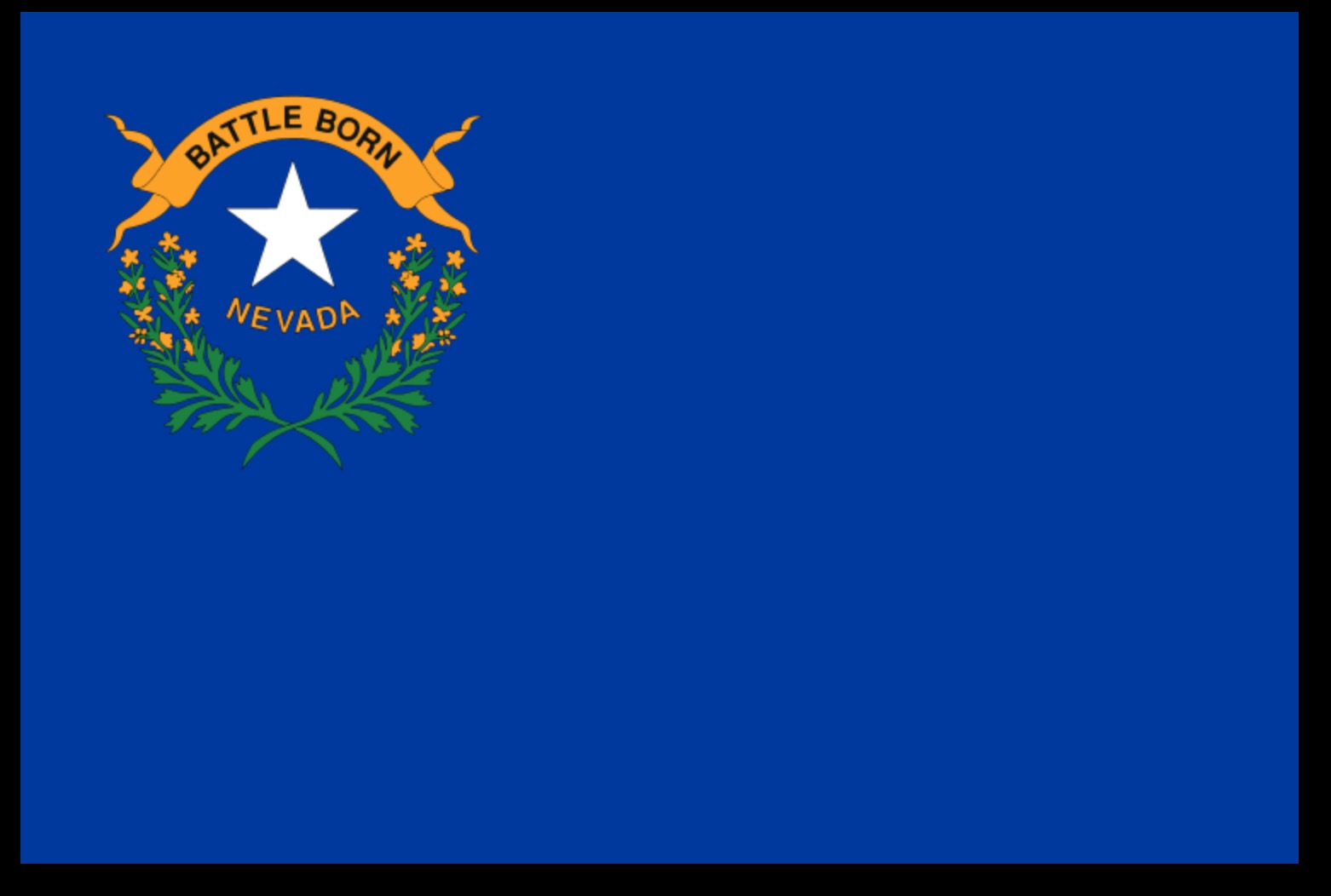Nevada, UNR, Nevada Southern, UNLV—what’s in a name?

By Sean W. McDonald
What’s in a name? That which we call a rose
By any other word would smell as sweet
—William Shakespeare, Romeo & Juliet, Act 2, Scene 2
Names have power. Juliet knew this. Names should mean nothing, Juliet cries—a rose would smell sweet whether it’s called a rose or a corpse flower—but Juliet knew this was true only in the dreams of the heart’s desire. Thus emerges her lamentation that her sweet Romeo belonged to the house of her family’s sworn enemy—the Montagues.
The torment over a name is one that is all too true for a graduate of both universities in Nevada. Most other in-state rivals have moved past their “what’s in a name” troubles—California means the University of California, Berkeley, not any other UC campus; Texas means the University of Texas at Austin, not UT San Antonio; Michigan means the University of Michigan campus in Ann Arbor, not Michigan State University in East Lansing and so on across the collegiate U.S.
But not so in the Silver State. Yes, I refer to the perennial rivalry between North and South. The controversy, in which both universities, North and South, lay claim to the Nevada name, draws its provenance from a desire for equality but ultimately results from a lack of political courage to let each university have its own identity separate from the other—to let the first University of Nevada to just be Nevada.
The rivalry cycles like clockwork, annually when the in-state rivals meet on the gridiron and recently, though historically more rarely but becoming less rare comparatively, when the elder university achieves notoriety on previously southern ground, the basketball court. The rivalry engenders raw feelings on both sides. To the ear of a diehard Rebels fan, hearing a nationally televised announcer say Nevada Wolf Pack, it’s nothing short of rage-inducing. Likewise, Nevada fans rightfully get riled up when southerners ignore the historical origins of the northern university’s name and instead call it “University of Reno” or “UNR.”
But let’s be honest, this is not an equal, bilateral dispute. UNLV loyalists are far more prominent in their refusal to call Nevada by its name. UNLV is a fine, well-established name, and they can have it all to themselves. But being first is special, and there’s no reason why the university in Reno should be shackled to a name it never asked for. Not UNR, not Nevada at Reno—just simply, Nevada.
To be clear, one could rightly dismiss this as a sophomoric, meaningless fight over a nickname, truly mattering to the most fanatical of fans, the most hardened of diehards. Fighting over names won’t solve Nevada’s chronic aversion to serious investment in higher education (or education at any level, really). But as Juliet knew, a name often means more than what is named.
Being first (and the only) has its privileges
Higher education in Nevada traces its roots to Elko in 1874, 10 short years after achieving statehood and at a time before there was a Las Vegas. It was first named the State University of Nevada, likely a natural reflection of the Constitution’s command to establish a “State University,” to enable the state access to federal benefits under the Morrill Land-Grant Act of 1862. The name was shortened to Nevada State University in 1881. Four years later it moved to Reno, a consequence of Elko being an ill-suited site for a state university when the state’s population was centered in five counties surrounding the Comstock Lode, 300 miles to the West.
In 1906, when the Las Vegas population was finally on the map with a few dozen permanent residents, the university was renamed again the University of Nevada. When you’re the only game in the state, a name comes easy, without much regard for regional allegiances or labeling. The unadulterated Nevada name stuck and stuck it did for nearly 100 years, from 1874 to 1969.
Las Vegas is born, grows quickly
In the 1920s, some bold politicians thought it a good idea to dam the Colorado River with a massive concrete plug at a site on the Nevada-Arizona border. Finished in 1936, the dam, later named Hoover Dam, was nothing short of night-and-day transformative of Las Vegas from a dusty spring-side watering hole on the route to Southern California into the desert oasis metropolis of glowing neon we know it as today. If you build it, they will come, and they did.
By 1950, Clark County’s population exploded to some 48,000 compared to Washoe County’s (home to Reno) population of just over 50,000. And with that population boom came demand for higher education facilities in Las Vegas. The University of Nevada’s era as the only kid on the block was nearing an end.
College classes in Southern Nevada emerged in the early 1950s, 80 years after the University of Nevada first opened its doors. Starting as extension classes in 1951, the Board of Regents formalized the program as the Southern Division of the University of Nevada in 1954. In 1957 it then acquired land for a campus that would later become UNLV. But Southern Nevadans soon realized they were receiving short shrift, the Southern Division having no autonomy and no identity separate from the only university in the state, headquartered in Reno.
By the 1960s, Clark County’s population eclipsed Washoe County’s. With the state’s growth, prospects for establishing a more formal higher education presence in the south improved. In 1965, the Legislature named the school Nevada Southern University, hoping to give it a more formal status that the Nevada Board of Regents had resisted. Population continued to boom in Southern Nevada. Pressure mounted for a separate institution.
Meanwhile, desiring to resist the institutional neglect apparent practically since its founding, Nevada Southern adopted the “Rebel” moniker and a mascot dressed in a southern “Confederate” uniform, thought of at the time to be a symbolic thumbing-of-the-nose toward northern “Union” traditions and symbols of their rival to the north, the University of Nevada, symbolism seen as true to Nevada’s Battle Born statehood roots during the Civil War.
Tone deaf as the symbolic gesture is to modern sensibilities (though college students not often are known for their reasoned wisdom over youthful indiscretions and intemperance), only recently has UNLV finally rid itself of the most potent reminders of its shameful “Confederate” origins—the UNLV student newspaper renamed from The Rebel Yell to The Scarlet & Gray Free Press in late 2016, a year after UNLV officially acknowledged the symbolically racist and segregationist tones of its early mascot.
By 1968, Nevada Southern had a campus to call home and was finally given its autonomy.
The fight for Nevada’s name persists
The next year brought UNLV’s name, but also emerged an unforgivable error: Born perhaps of an overcorrection necessitated by historical neglect of higher education in Southern Nevada, and ostensibly to prove an egalitarian attitude toward both institutions, without asking for northern input the Board of Regents decreed the two universities would share the Nevada name, and they were thusly rechristened “University of Nevada, Reno” and “University of Nevada, Las Vegas”—UNR and UNLV for short—in 1969.
And so was born the perpetual north-south infighting over a name.
Though born of a noble desire for true equality between the institutions, the half-century since then has proven one thing repeatedly: Though the two universities have equal legal status, the two universities are not equal in most respects.
Though boasting almost double the enrollment to its “equal” to the north, UNLV consistently ranks poorer in most performance metrics. Though there are some jewels—the internationally renowned College of Hospitality and the Boyd School of Law, recently boasting a number one legal writing program and its highest-ever 59th place ranking in the nation—UNLV rivaled Nevada in little else than basketball.
The fight over the name has never gone away, bubbling up between Nevada and UNLV students during the rivalry battle for the Fremont Cannon, college football’s largest and most expensive trophy.
More rarely, the nickname skirmishing reignites into conflagration when big brother Nevada upstages little brother UNLV on the Runnin’ Rebels’ field of glory—the basketball court. Witness Nevada’s stunning, come-from-behind (twice!) trip to the Sweet 16 this NCAA Tournament. The same was true during the Wolf Pack’s last trip to the Sweet 16 in 2004. With national media showering the Nevada Wolf Pack with attention, the North-South militants sharpen their barbs and stake claims to the Nevada name—this Nevada graduate and UNLV Boyd School of Law post-graduate being no exception.
None of this diminishes UNLV’s accomplishments. UNLV’s been to the NCAA Tournament 20 times to Nevada’s eight, with one tournament championship in 1990, capping UNLV’s glory years during the coaching tenure of Jerry ‘Tark the Shark’ Tarkanian. Nevada has yet to achieve that kind of status in hoops.
But the UNLV glory years are long since over, and the fight over the Nevada name ended ages ago too, despite Rebel attempts to keep “southern tradition” alive. National audiences know our universities as the Nevada Wolf Pack and the UNLV Runnin’ Rebels (for basketball specifically, just the Rebels for athletics generally)—as national media style guides uniformly advise.
The market decided decisively in favor of Nevada (no comma, no Reno) and UNLV as the monikers for the respective institutions. UNLV no longer needs a crutch on the more prestigious institution’s imprimatur to establish its place in academia. Two campus identities have emerged and become well established. Gone is any need to prove equality of status through a shared claim to the Nevada name.
The University of Nevada gave birth to what became UNLV, which now has its autonomy, its own campus, its separate identity. Las Vegas has been my home since 2009. As a graduate of both institutions, it’s time for the name torment to end. Just as Nevada Southern once fought for their identity, it’s time for UNLV to cast off the final vestige of the North-South divide, acknowledge the University of Nevada came first and to let the northern university have its name back and just be called Nevada.
When he’s not bleeding Silver and Blue, Sean W. McDonald is an attorney admitted to practice in Nevada and Washington State focusing on labor-side employment, labor and employee benefits law, and government affairs. An avid follower of the intersection of politics and the law, he started self-publishing his musings on Nevada politics in 2013 on his independent blog, Amicus Nevada.
This story was updated at 10:30 PM, 3/22/18, to correct from four to eight the number of Wolf Pack NCAA appearances.
